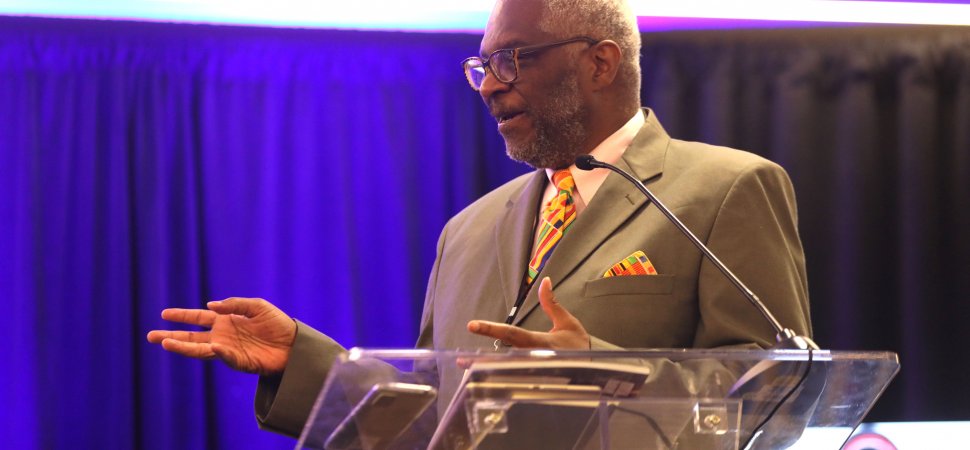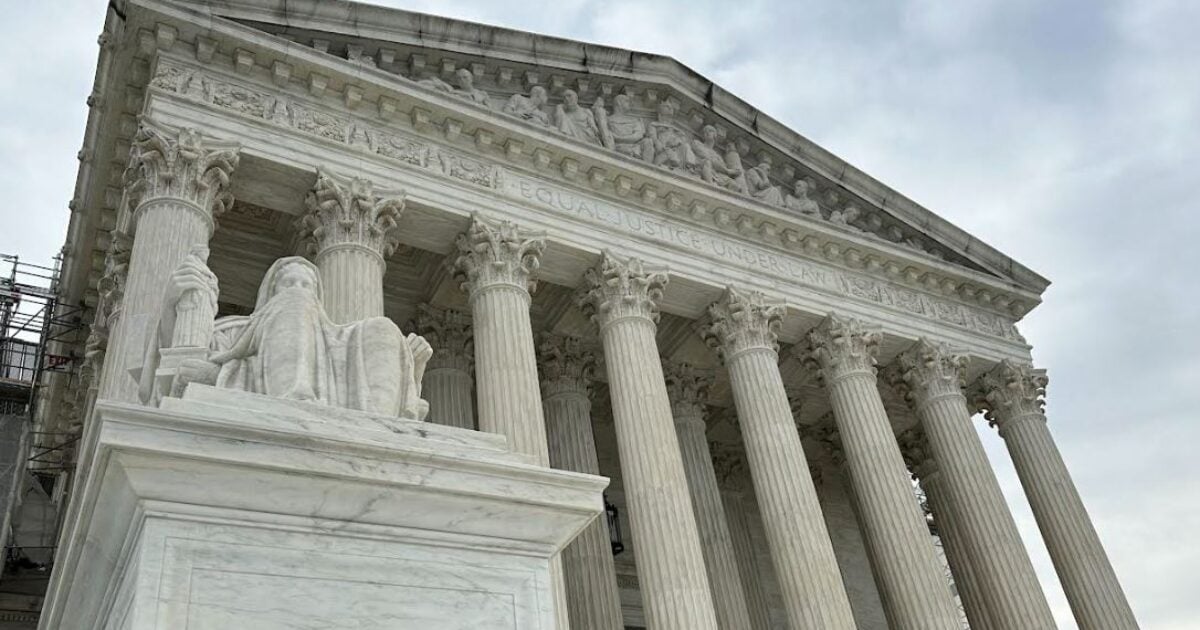In Atlanta on August 17, the birthday of Marcus Garvey, the Journal of Black Innovation made perhaps the most significant Black industrial announcement of the past century, unveiling Mathematical Modeling Inc.’s (MMI) DynaKrypt, a quantum-level encryption solution with 13.5 million bits of protection, developed by a professor at an historically Black university. We revealed that MMI would receive the Roy L. Clay Sr. Technology Pinnacle Award during our Innovation&Equity23 presentation on January 15.
The 93-year-old Clay is a Silicon Valley Engineering Council Hall of Fame member who began programming supercomputers for the Atomic Energy Commission in 1958, and began computer R&D for Hewlett-Packard in 1965.
On August 1, the first day of our 19th annual Journal of Black Innovation National Black Business Month, we also noted the selection of Matt Fraser, New York City Chief Technology Officer, as a Clay Pinnacle winner. Fraser grew up in Brooklyn, New York and has opened the Joint Security Operations Center there as the front line in America’s cyberdefense.
In my 50 years as a journalist, I’ve learned these innovators are not unique. My older brother, for example, has been a computer programmer for 50 years.
It was a tragedy for my younger, autistic brother in 2004 that propelled the monthlong event, a psycho-social intervention to show the foundational role of African-American business leaders in American democracy and its economy. He died in police custody because he was automatically seen as a threat during an ambulance call. I had just completed Loaded Dice: the State of Black Business, first edition when we chose August, the month of his birthday, for 31 Ways 31 Days, a structured effort for people to visit a Black business in a different industry each day. The goal is to achieve what developed into Our10Plan: the African-American economic strategy 11 years later, following months of meetings with major Black institutions.
Frederick Douglass wrote that “our freedom is tied to our business ownership.” His fellow dockworker Isaac Myers felt so strongly about that as to organize Baltimore’s Black dockworkers after the passage of the 13th Amendment into a cooperative that controlled the shipyard they worked in. Myers did the same for Black dockworkers around the Atlantic seaboard, creating a political force that brought about the 14th Amendment to enforce contracts for freedmen who became farmers and business owners.
The 14th Amendment did a lot more. It also brought the full faith and credit of the United States behind its public debt, the floor on which our financial markets rest. That happened because of Black businesspeople.
But in 2020, the 244th year of the nation, only 1.7 percent of federal contracts went to African-American-owned small businesses; 0.7 percent of research and development is spent with historically Black colleges and universities; 0.1 percent of business loans go to Black firms; and in the past year, African-American employment fell in most major industries except low-wage jobs exposed to danger from the pandemic.
The data in our 18 following State of Black Business reports points the path toward achieving the “promised land” that Dr. Martin Luther King Jr. foresaw in his final speech. In my opening remarks to the U.S. Black Chambers in July, I noted that our advocacy had created the best year ever economically for African-Americans in 2021. Two years ago, we found that, according to the U.S. Small Business Administration, only one-thousandth of Paycheck Protection Program loans went to Black firms. A change in legislation raised that amount from $550 million to $16 billion in 2021. HBCUs got $6 billion when the previous high had been $220 million.
Particularly effective have been our partnerships with members of the National Black Caucus of State Legislators, to which I presented Our10Plan in 2015. Sens. James Sanders, chair of the New York State Senate Banks Committee; and Steven Bradford, chair of the California Legislative Black Caucus, opened our May 15 unveiling of this year’s report, Down But Not Out: State of Black Business, 19th edition. Bradford referenced the return of Bruce’s Beach near Los Angeles to the Black family that had originally owned it and the first reparations task force. New York Governor Kathy Hochul also has brought a cooperative spirit to her budget deliberations with the state’s Black leadership.
Down But Not Out features the fastest-growing African-American industrial sector, spirits, which now includes 300 brewers, distillers and vintners. The report features Thomas T. Thomas, winner of three Wine Enthusiast top scores, on the cover.
We also identify the BlackBio100, a list of Black life sciences experts, including M&B Sciences, a geospatial epidemiology and clinical trial leader that just acquired Clara Health in San Francisco. Our detailed state and local level plans point to life sciences as the industrial anchor to revive communities. As chair of the Central Brooklyn Economic Development Corp. in Brownsville, the densest concentration of public housing in the world, I see B’ville Hub as the engine that powers the research of Downstate Medical and Medgar Evers College into companies like Global Blood Therapeutics, which Pfizer just purchased for its sickle cell drug.
Historic preservation is also critical to renewing African-American communities. I was chair of the committee for Richmond, Virginia’s Jackson Ward Historic District in the 1980s, which is now still thriving as a Black business district. In 2017, Rick Moss and I completed the 6,000-site California African-American Freedom Trail to be the guardian of the illustrious heritage of African-Americans in the Golden State.
A visit this weekend to the most successful African-American community in history, Azurest, Ninevah, and Sag Harbor Hill in Long Island, New York, included all the elements that King foresaw. A 120-lot enclave developed by a Black woman architect in 1947 marked its 75th anniversary with the beachfront homes of the Earl Graves, Johnnie Cochran, and Ron Brown families next to the private beach. It is near a 1839 church that was an Underground Railroad station. The church, cemetery and neighborhoods are on the National Register of Historic Places.
Yet, when we went out to launch the Central Brooklyn EDC capital drive, we found that these affluent neighborhoods were facing gentrification just like we were in Brownsville. Our answer is seeding the industries with businesses like Mathematical Modeling; Figgers Communications, the rare smartphone that’s made domestically, created by a 32-year-old genius on his fourth model; M&B Sciences; and HireUS, a recruitment firm created by a recent Roy Clay Pinnacle winner and Black Titan Investments.
As I talk with Black chambers and trade associations around the country during August, I’ve been pointing out the 90 federal agencies that have produced their first equity action plans. I’ve also been pinpointing the State Small Business Credit Initiative and The National Institute of Standards and Technology’s Hollings Manufacturing Extension Partnership Program, which seed those industrial anchors to meet local and immediate needs as well as improve supply chains and reduce inflation.
The closing of the month includes our #DrinkBlack showcase in Oakland for Black brewers, distillers, and vintners on August 27 and the August 31 preview of the Africa Caribbean Trade and Investment Forum from Bridgetown, Barbados, the first such joint event between the African Union and Caribbean Community.
All the way back to Paul Cuffee, the Revolutionary War privateer, and later, shipbuilder, trade with the continent and islands was seen as the natural evolution of African-American business. During the 19th annual Journal of Black Innovation National Black Business Month, we are honoring their wisdom by fulfilling their wildest dreams.
Postscript
Imitation is the sincerest form of flattery, but as the FBI just noted in an indictment in Florida, African-Americans are targeted with misinformation, often from foreign intelligence sources. Since 2004, we have only had one official source and set of activities. Only the 19th annual Journal of Black Innovation National Black Business Month is the authentic, trusted source of the most complete information on African-Americans in the economy. We have seen over the past two years, online posts by entities claiming to “celebrate” which should be a sign to consumers that it does not represent us. Our mission is to implement based on scientific data. Some of these pretenders have also been fined billions for discrimination, sued by their Black employees and local governments and been part of our testimony to the House Judiciary anti-trust subcommittee and House Financial Services subcommittee on equity. We don’t allow corporate sponsorship, so take any such proffers with a grain of salt.










